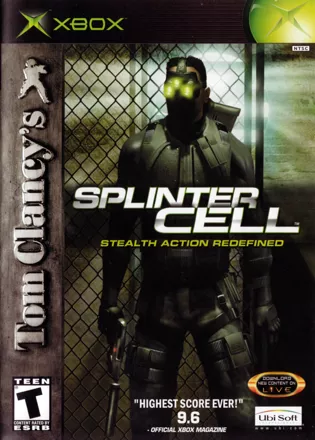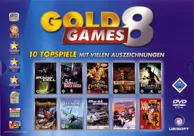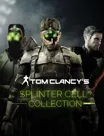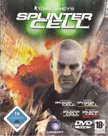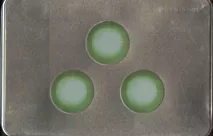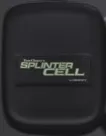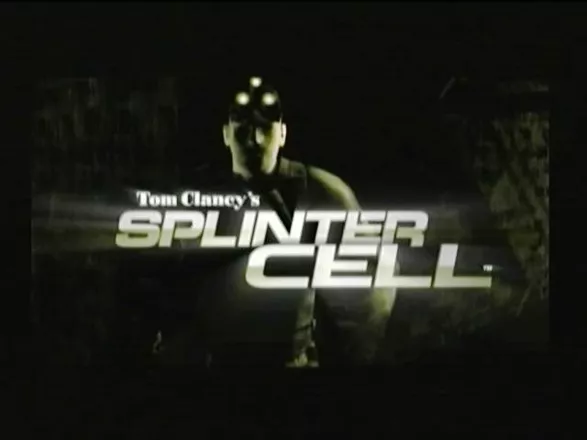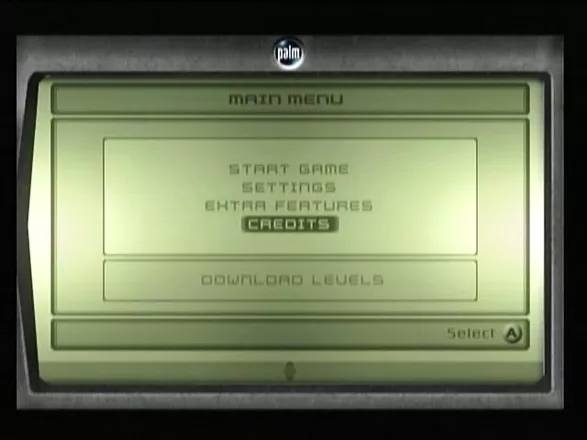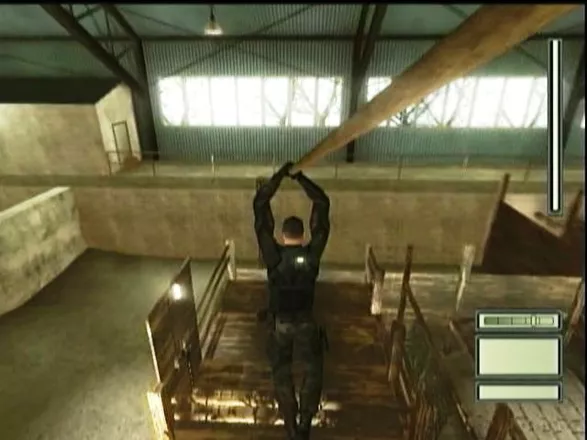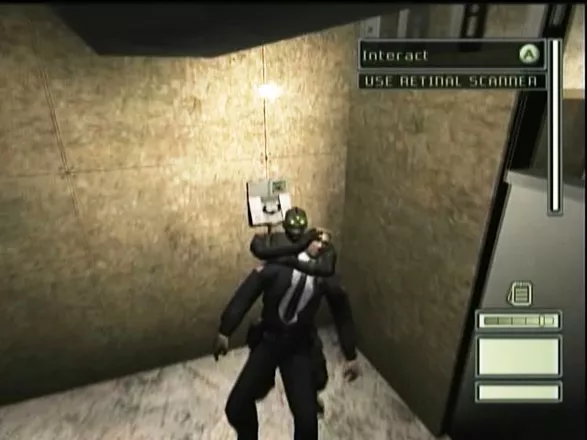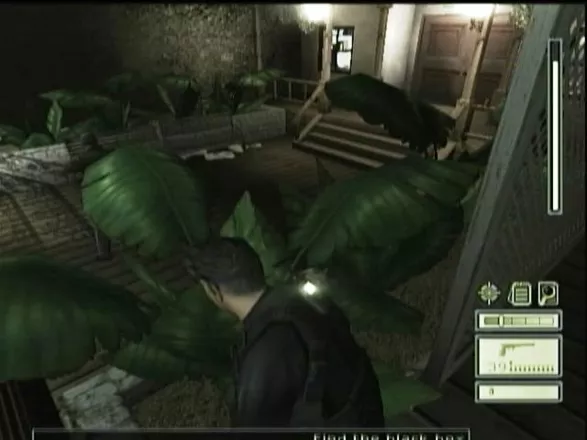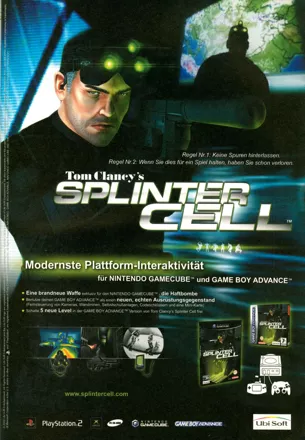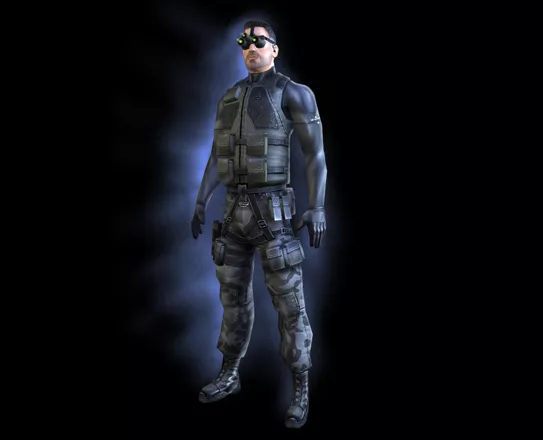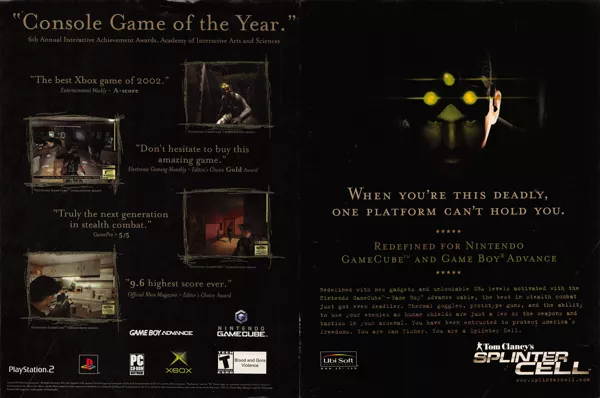Tom Clancy's Splinter Cell
-
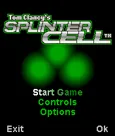 Tom Clancy's Splinter Cell
(2003 on
BREW,
J2ME)
Tom Clancy's Splinter Cell
(2003 on
BREW,
J2ME)
-
 Tom Clancy's Splinter Cell
(2003 on
N-Gage,
Game Boy Advance)
Tom Clancy's Splinter Cell
(2003 on
N-Gage,
Game Boy Advance)
Description official descriptions
Splinter Cell is a third-person action game with a focus on stealth, similar to the Metal Gear Solid series. The player takes on the role of Sam Fisher, an operative for the secret organization NSA Black Operation, part of the U.S. government. The organization deals with very sensitive missions, often taken on by a Third Echelon splinter cell division Fisher is part of. His missions are so discreet, that if he is captured the government will deny any such existence of that organization.
To get around and reach his objectives, Fisher has a variety of moves at his disposal. He can walk, run, crouch, jump, rappel, shimmy, cross horizontal wires, zip using a zip cord, and do a split jump. There are different approaches to taking out enemies. He can use weapons, but the noise might alert guards and that generally makes it more difficult to complete missions. Opponents can be stunned, killed, or subdued. Fisher can for instance jump down from the ceiling and knock an opponent unconscious. Some enemies are needed to activate a door or passcode. Therefore enemies can be taken hostage by holding a gun to their head. They can also be interrogated or be used as human shields.
Other features include the ability to peak through a door before going through or use an optic cable camera (a "snake" camera) to peer through the underside, to check what is ahead. As the focus is on stealth, the amount of weapons is rather small. There is an FN F2000 assault rifle that can be fitted with a silencer and other modifications, and there is a suppressed FN Five-Seven pistol. Ammo is limited and additional bullets are scarce. Players are encouraged to avoid danger by sneaking through shadows and hiding behind objects. Fisher has access to a light meter to check how visible he is, and night vision as well as thermal goggles to see in the dark and view warmer temperatures in colour. Other weapons are ring airfoil projectiles, gas grenades and sticky shockers.
The Xbox version is the original one, with a closely adapted version for the PC, and separate ports for PS2 and GameCube. The latter have slight changes in levels generally to make it a little easier. Each version also contains some exclusive features. The Xbox and PC versions include three additional downloadable missions (Tom Clancy's Splinter Cell: Mission-Pack). The PS2 version has an exclusive level, and the GameCube version can be connected with a Game Boy Advance through a link cable to view an overhead map. The PS2 and GameCube versions include additional binocular items, and the latter also has an extra sticky bomb weapon. The PS2 release also has an exclusive 5min pre-rendered intro cinematic with full orchestrated score, showing how the two agents you are sent to look for at the beginning of the game were captured.
Spellings
- 汤姆克兰西 之 细胞分裂 - Simplified Chinese spelling
- 湯姆克蘭西 之 縱橫諜海 - Traditional Chinese spelling
- 细胞分裂 - Simplified Chinese spelling
- 스프린터 셀 - Korean spelling (Hangul)
Groups +
- 3D Engine: Unreal Engine 2
- Covermount: Fullgames
- Covermount: Level (Romania)
- Enhanced ports / Port differences
- Game with creator's name
- Gameplay feature: Body dragging
- Gameplay feature: Lock picking
- Gameplay feature: Torture
- Games made into books
- Green Pepper releases
- PlayStation 2 Greatest Hits releases
- PlayStation 2 Platinum Range releases
- Setting: 2000s
- Setting: Future now past
- Software Pyramide releases
- Splinter Cell series
- Tom Clancy licensees
- Ubisoft eXclusive releases
- Xbox Best of Platinum Hits releases
- Xbox Classics releases
- Xbox Platinum Hits releases
Screenshots
Promos
Videos
Add Trailer or Gameplay Video +1 point
See any errors or missing info for this game?
You can submit a correction, contribute trivia, add to a game group, add a related site or alternate title.
Credits (Xbox version)
106 People · View all
| Senior Producers | |
| Associate Producer | |
| Art Director | |
| Lead Programmer | |
| Lead 3D Artist/Lead Level Designer | |
| Animation Art & Technical Director/Lead Animator | |
| Lead Character Artist/Character Concept Artist | |
| Scriptwriter | |
| Game Designer | |
| Lead Game Designer | |
| Sound Game Designer | |
| Technical Directors 3D Art | |
| Production Assistant | |
| Original Creation with Participation as Associate Producer & Creative Director | |
| Animators (In Game) | |
| 3D Artist | |
| [ full credits ] | |
Reviews
Critics
Average score: 91% (based on 95 ratings)
Players
Average score: 3.7 out of 5 (based on 229 ratings with 11 reviews)
The Good
Before I start, let me make one thing abundantly clear: Splinter Cell is nothing at all like Metal Gear Solid 2. Everywhere I look, I see Splinter Cell being compared to MGS2. Splinter Cell and MGS2 are as much alike as apples and bananas. MGS2 is an action game, complete with a barrage of weapons, boss battles, and a surreal plot. Splinter Cell actually is a stealth game. Your objective is to never once get caught. Gameplay is realistic, as is the plot. So if you are looking for an MGS2 clone, search elsewhere, because Splinter Cell is far from it.
Now that I have that off my chest, on to the actual review. Like I said, Splinter Cell is a stealth game, and Ubi Soft did a brilliant job with it. The gadgets and the atmosphere contribute to the feel of this game immaculately. This game skips past all the glamour, relinquishing that suave type quality found in other "stealth" games, in order to make it feel real. Real in a good way, that is. Think of it this way: Splinter Cell is more of a strategy game than an action game. You will most likely do each level numerous times before you beat it, scoping out your surroundings in order to make the best decision for your next run. What makes this especially fun is that while scoping out your surroundings, there are lots of factors to consider.
One of the things in Splinter Cell that contributes so greatly to the stealthy feel of the game is the light meter. At the bottom right hand side of the screen, you have a picture displaying your current weapon, item, and/or gadget. Right above this icon, there is a meter that is dark on one side, and gets increasingly lighter as it gets to the other side. Can you guess what this is for? That's right, this meter shows you how much light you're in, by utilizing a bar that shows your current position on the meter. If the bar is at the very left side of the meter, no worries, because you are completely invisible to the enemy. The more light you're in, the farther the bar moves to the right. I loved this so much, just because you are actually forced to use the darkness as your ally, and believe me, it will be by far your most important ally. And because you'll be spending a lot of time in the dark, you can just pop on your night vision goggles to help you see, and later on, the heat vision goggles, both of which will prove to be invaluable at some point in the game.
Another thing I loved about this game that some people might have a slight problem with is that you get only two weapons throughout the entire game. One is a standard silenced pistol, while the other is a standard rifle/sniper rifle/machine gun/gadget shooter. The pistol you get right away, while you get the "SC20K" you get later on. When you get the SC20K though, that's when the real fun starts. Not only is it incredibly useful as a gun, but also a lot of the gadgets you get will be used through this gun.
Ah, the gadgets. How I loved those precious little items. If a game were released that was composed solely on being able to play with the gadgets in Splinter Cell, I'd get it in a heartbeat. Some of them are real things, things invented by military experts and what not, while others are made up. Real or not, they are all fun. Some of them include your Sticky Shockers, which electrocute a victim upon impact, Sticky Cameras, which can be shot into the wall or ground, or anything that isn't a person, providing you with a reconnaissance opportunity where you may have otherwise been in a lot of trouble. And then, my favorite, the Distraction Camera. Man these things were great. What they do is, they work the same as Sticky Cameras, except they are a little limited in their abilities, like limited rotation and no zoom capability (which the Sticky Camera has). But what the Distraction Camera can do instead is so much better. Once stuck to a wall or other solid object, you push a button to make a noise in order to distract a guard and have him come over to investigate, and when he comes close enough, press another button to release gas to knock him out, all while watching from the front seat camera view. All of the gadgets have specific purposes, and while it is possible to make it through a level using only a few of them, it is easier and much more fun to use the ones you have.
If you've ever seen the manual for Splinter cell, you'll notice that there are a good two pages or so dedicated to all the specific moves Sam Fisher can do. Crawling, hanging, and rolling are some of the basics, but there are a whole lot more. One of the coolest, yet by far the most useless (I only used it once the entire game) is the split-jump. This is where you jump up and do a mid-air split, catching yourself on the walls on both sides of you with your legs. There are lots and lots of other moves, some useful, others not as much, but you'll have fun trying them all out.
One thing that I wasn't sure whether to put into the good or bad section is the A.I. Play the game and it will be blatantly obvious that the A.I. is certainly advanced, except it may sometimes seem too advanced, if that makes sense. I finally find a game where the enemy is actually fairly intelligent, and then there are some points in the game where it seems like they are more genetically altered super humans rather than plain old intelligent ones. In the game, controls are touch sensitive, so if you move the analog stick a little, you move slow, move it a lot, and you move fast. So usually, if you are close to a guard and go as slow as possible, he won't hear you. But in some missions, if you even flinch, the guards are on you like crazy. So why did I put the A.I. in the good section? Well, it is a fairly rare occasion that the guards become super-human...most of the time they provide challenging yet reasonable difficulty to the level, and dealing with them just makes the game more fun.
Plot-wise, Splinter Cell is relatively dull, yet at the same time frighteningly realistic. You, as Sam Fisher, near the end of 2004, are sent to investigate the disappearance of a CIA agent who was investigating the former Soviet Republic of Georgia. Turns out that their leader is really angry with America, and you have to terminate all threats using the "Fifth Freedom": the freedom to steal, kill, and so on in order to withhold peace throughout the world. The story is dull because it's more like a news story from the 10:00 news than an original, exciting plot of twists and turns that you might be expecting. But it is also a bit frightening in the same way, because it happens to be the type of story you dread watching. All in all though, the story is of little importance, even if you have a high emphasis on stories in video games, because chances are good that even you would like this game.
Finally, Splinter Cell got a lot of attention because of its graphics. But when I first played the game, I noticed that the game didn't really look all that great, don't get me wrong, it looks good, but it's really nothing extraordinary. And then I noticed what all the talk was about. One of the really big things about Splinter Cell's graphics are the lighting effects. Like I said before, light and dark play a huge part in the game's stealthiness, and to make this really work, Ubi Soft tried real hard on making the lights look good. This is especially evident when you wear the night vision goggles, the way they made those work is outstanding. But in order to fully understand, you'll just have to try it out yourself.
The Bad
So, the plot is lacking, but there's still hope for the character development right? Sorry, but no. I mean, there are characters in the game, and things happen to these characters, but even when the game tries to make dramatic sequences by doing something unexpected to one of the characters, I sit emotionless because I have no attachment whatsoever to any of them. They even try to bring in Sam Fisher's daughter for something, but that whole thing is so underplayed it is really just a pathetic cry for help.
Another very small bad thing is, if you are using the silenced pistol, it is extremely difficult to shoot small things, things far away, and especially far away small things. If you are trying to shoot out a light bulb from even a fairly small distance, and you are 100% positive that the cross-hairs are right on the mark, and you shoot, you'll still probably miss. That can get really annoying, especially in critical parts of the game, but it certainly isn't enough to even come close to ruining the game in any way.
The Bottom Line
Play Splinter Cell if you want a really good strategy stealth game. And even if that isn't what you're looking for, try it out anyway, because this is a darn good game.
PlayStation 2 · by DarkDove (63) · 2003
The Good
This game is everything console games desire or should desire to be. It is extremly immersive, well designed and challenging.
The Bad
HARD! HARD! HARD! Learn by dying has never been my preference for a game. Splinter Cell is filled with it. If you are a patient game player, you can make it through with minimal deaths. Else you will try and try again to make it through, but you should! Each mission has its jewels.
The Bottom Line
Frustrating yet absolutley fun.
Xbox · by Giacomo (3) · 2003
The Good
I'm naturally suspicious of anything called Tom Clancy's Insert Pretentious Title Here. But on the other hand, there was the tantalizing prospect of feeding my Thief addiction.
The biggest downside of the Tom Clancy label is, as you'd expect, the patently ridiculous story taking itself far too seriously: Georgia suddenly decides, for no apparent reason, to wage "information warfare" on the US; cue cutscene of TV news detailing the dangers of a computer virus spreading into the water supply. Which is perhaps all too representative of how real newscasters treat computer threats - now, it might be "technically impossible" as you say, but imagine the chaos that would ensue if people came down with general protection faults in the middle of traffic!
--in fact, you're probably best advised to skip the faux broadcast collages altogether and concentrate on the meat of the game.
The game itself is basically right in the middle of the intersection between Thief and Deus Ex, with bits of Project IGI thrown in. You do carry a gun, but it's rare that you fire more than a hundred bullets on any level. A new twist is that, in addition to knocking people out, you can grab them by the neck and put a gun to their head - and then knock them out with your elbow when they've told you what you need. Amazingly, everyone in the game are smart enough not to cry out in surprise at having the barrel of a gun against their temple.
Our hero isn't quite as suave as Garrett; he's called Sam and is some middle-aged guy with stubble - though he does look good wearing night-vision goggles, something the packaging revels in. Since this is based on some Tom Clancy nonsense, he works for the NSA, but at times, he has an almost gentleman-thief air about him. A gentleman thief with black fatigues and military hardware, that is.
Being a specialist in infiltration, Sam has a wide range of special moves like sliding on steel wires, rappelling, climbing pipes and hugging walls. Which is all very nice, but it does give that flight simulator feeling of hunting around for rarely used keys at times. This is especially true for the "split jump", the athletic feat of bracing your legs against two opposing walls: while it looks very cool in screenshots, it's hardly ever used, and by the time you need it, you'll have forgotten it among all the others.
The best of Sam's moves is easily peeking around a corner and drawing his pistol. From this position you're minimally exposed, and can take on three times the numbers you'd normally be able to. This isn't just a cool move culled from the movies; it also helps you feel more part of the environment, less like a heavily armed upright soapbox on wheels. It's also a word in favor of realism, as the first thing you look for in a firefight is good cover.
In what might be a first, you control walking speed with the mouse wheel. There are four speeds; you'll probably spend most of the game crouched on the second-slowest speed, but there's a time and place for all the combinations of crouching, sneaking and running, which gives a nice feeling of nuanced control.
Your goggles provide two additional modes of sight, night vision and infrared. Both look pretty cool; the 3D engine observes the way bright light "bends around" edges - I think "bloom" is what the industry calls it - anyway, it means a 40-watt lightbulb shines like the sun through night-vision, while a well-lit room is blinding bright. The infrared is primarily useful for seeing people through bookcases and such, though it does look very nice and has received adequate attention; notably, you can use it to see which guards are unconscious and which are room-temperature - pop a bullet in someone and you'll see the body heat fade away. All this makes the game feel bigger than it actually is, since each level can be seen three ways.
Splinter Cell has the most play on shadow and light I've seen yet, almost to the point of a ridiculous number of scenes with the sun shining through blinds, lamps through grilles, etc. Sometimes, things in a bright light exhibit that plastic toy look, but most of the game is spent in the lovely gritty light-amplified mode, or the graphically impressive infrared. The night vision is in black-and-LCD-cream, which is quite attractive; and the added video noise works well, surprisingly. The fact that I spent a lot of time looking at the game in monochrome, hardly even noticing, should tell you just how well it works.
The Bad
The title movie. When I saw the sheer amount of people who had worked on it, I wanted their job. I mean, I could do it better. Most ten-year-olds could do it better. And that music! Agh!
The ingame music is, unfortunately, not much better. You'll be wishing for cheesy Deus Ex tunes before soon.
The blend of sneaking and shooting while not giving the same degree of freedom as in Deus Ex means the game winds up being a bit off; by far the most enjoyable level is the one where you're not allowed to kill a single soul, yielding the tightest, most intense gameplay. On most of the other levels, the easiest route is often to just shoot people from a distance whenever you have the opportunity and then stroll right past their dead eyes, picking goodies out of their kit.
Murder is usually justified, e.g., after seeing a gang of mercenaries gun down an office full of helpless programmers, you're handed a bunch of grenades and a license to kill, but towards the end of the game, you just don't care anymore; I eventually found myself shooting security guards out of laziness and annoyance.
The sound effects are competent, but they're not as delicious as either Thief 1 or 2's; Splinter Cell is more visually oriented, for better and worse.
Oh, and there are a couple of jumping puzzles which call for the annoying-to-perform move of kicking off walls.
The Bottom Line
Adequate snack for sating Thief abstinencies, with some fresh gains of its own. Certainly worth it at reduced price.
Windows · by Ola Sverre Bauge (237) · 2004
Trivia
1001 Video Games
Tom Clancy's Splinter Cell appears in the book 1001 Video Games You Must Play Before You Die by General Editor Tony Mott.
Downloadable Content
On March 13, 2003, the first downloadable level, Kola Cell, was released. It can be played whether the game was beaten or not.
Development
The PS2 version was ported over by Ubisoft Shanghai in China. It was developed within 4 months.
Fifth Freedom
One possible source of the Fifth Freedom concept is Noam Chomsky's preface to The Culture of Terrorism: "U.S. international and security policy ... has as its primary goal the preservation of what we might call “the Fifth Freedom,” understood crudely but with a fair degree of accuracy as the freedom to rob, to exploit and to dominate, to undertake any course of action to ensure that existing privilege is protected and advanced." FDR's original Four Freedoms are Freedom of Speech, Freedom of Religion, Freedom from Want, and Freedom from Fear.
Hacking
Tom Clancy's Splinter Cell is one of the three Xbox games that, with the help of Action Replay, can hack into an unmodified Xbox. The other two being 007: Agent Under Fire and MechAssault.
Novels
Penguin has published novels inspired by the game; Sam Fisher's adventures continue in Tom Clancy's Splinter Cell (2004), Tom Clancy's Splinter Cell: Operation Barracuda (2005) and Tom Clancy's Splinter Cell: Checkmate (2006), all (perhaps confusingly) written by Raymond Benson under the pseudonym "David Michaels".
References
- The vehicle that picks up Sam outside the police station at the end of the first level is a delivery van from St-Hubert, a popular restaurant in Montreal where the game was designed. Just look at its logo and compare it to the one on www.st-hubert.com.
- On the level Chinese Embassy, Part II (the second time playing in the Chinese Embassy), go down the back alley (not through the front door of the restaurant) and use the optic cable on the door. The chef can be heard humming If I Were a Rich Man from the movie (or play) Fiddler on the Roof.
- In the original Chinese Embassy level, Sam is told to meet with a mission contact. Once he comes into contact with him, he is to introduce with the code phrase "A bright cold day in April", which is the first line of the novel 1984, written by George Orwell.
Third Echelon
In the game, Sam Fisher works for Third Echelon. The real world ECHELON is a global intelligence initiative run by the US, UK, Canada, Australia and New Zealand. While ECHELON's full capabilities (and intentions) are unknown, the ACLU reports estimates that the network intercepts up to 3 billion messages (phone, e-mail, Internet) daily.
Version Differences
The PC version of Tom Clancy's Splinter Cell is fairly closely based on the original Xbox version. Both were made by Ubisoft Montreal. The GameCube and PlayStation 2 versions, which were developed by Ubisoft Shanghai, are similar to each other, but have many small changes over the originals with the result that they are generally easier. Some doors are moved around, guards are less likely to notice gunshots, etc.
Each version of the game, except for Windows, has some exclusive features. The Xbox release has two new missions downloadable via Xbox Live which involve a Russian nuclear sub. The PlayStation 2 version includes an exclusive level which takes place in a nuclear power plant, new cinematics, a new intro cinematic with original music by the Prague Orchestra, and many behind-the-scenes interviews and documentaries both about the new intro and the game itself. GameCube uses the Game Boy Advance link cable to give you a real-time overhead map and a new sticky-bomb weapon. Additionally, both GCN and PS2 include a new binoculars items.
Awards
- 4Players
- 2002– Best Xbox Game of the Year
- 2002 – Best Xbox Game of the Year (Readers' Vote)
- 2002 – Best Xbox Action Game of the Year (Readers' Vote)
- 2003 – Best PC Action Game of the Year
- Computer Gaming World
- February 2006 (Issue #259) – Introduced into the Hall of Fame
- GameSpy
- 2002 – Xbox Game of the Year
- 2002 – Xbox Game of the Year (Readers' Choice)
-
Golden Joystick Awards
- 2003 - Runner-up to Star Wars: Knights of the Old Republic for Xbox Game of the Year.
-
Verband der Unterhaltungssoftware Deutschland (Entertainment Software Association Germany)
- August 31, 2003 - Gold-Award for selling more then 100,000 (but less then 200,000) units in Germany, Austria and Switzerland. (PS2 version)
Information also contributed by Ace of Sevens, Alexander Misiti, Karthik KANE, MegaMegaMan, Olivier Masse, piltdown man, Pseudo_Intellectual, Reborn_Demon, Terrence Bosky and Xoleras.
Analytics
Upgrade to MobyPro to view research rankings!
Related Sites +
-
Gamasutra post-mortem for PS2 version
Project lead Wu Dong Hao talks about the successes and pitfalls of porting Splinter Cell to the PS2 on a very tight schedule. -
Get In, Get Out, Don't Leave a Trace
An Apple Games article about the Macintosh version of Splinter Cell (August, 2004). -
Tom Clancy's Splinter Cell
Official website -
Wikipedia: Tom Clancy's Splinter Cell
article in the open encyclopedia about the game
Identifiers +
Contribute
Are you familiar with this game? Help document and preserve this entry in video game history! If your contribution is approved, you will earn points and be credited as a contributor.
Contributors to this Entry
Game added by JPaterson.
Macintosh added by Corn Popper. GameCube added by Kartanym. PlayStation 3, PlayStation 2 added by MAT. Xbox One added by Eufemiano Bullanga. Windows added by Rantanplan.
Additional contributors: MAT, Unicorn Lynx, Corn Popper, Sciere, Ace of Sevens, Zeppin, Patrick Bregger, Rik Hideto, FatherJack, 一旁冷笑.
Game added November 19, 2002. Last modified April 5, 2024.
